#horror of the heights
Explore tagged Tumblr posts
Text
Dungeon Meshi Horror of the Heights Au
presenting!
Thistle as- Joyce-Armstrong!
Joyce-Armstrong was clearly good friends with Lieutenant Myrtle, and he was not satisfied with the explanation of Myrtle's death. Like our intrepid protag, Thistle is rich, capable, determined, and off-putting! He wants to know what really happened to Degal in this au, taking him to the air.

King Degal as(please let these aviators not be based on real people)- Lieutenant Myrtle!
Thistle in cannon is searching for Degal alive, in this story, Degal probably learned to fly with thistle and they became like brothers. When Degal fell from his plane without a head after a series of similar accidents with other aviators, Thistle was not satisfied with the explanation given, they are convinced something more sinister is afoot, past the point of reason, obsessed with the circumstances of Degal's death.

Falin as- Perkins, the mechanic!
Thistle saw how good Falin was with machinery and planes in a situation having to do with whatever the main gang is doing in early 1920s aviator/investigative reporter land. He employed her under much duress to be his mechanic cuz he needs only the best of the best quality plane and plane service to make his journey to the upper atmosphere. Her friends and family are a bit concerned, but glad she has such a cushy job now!

The Island Lord as- The farmer, Mathew Dodd
Island lord owns island where dungeon is. Farmer owns farm where mystery is found. Nuff said.
Kabru as- The Narrator!
A tale requiring a deep understanding of all those involved and some good ole fashioned investigating/ snooping? I admit I was tempted to make Laois the narrator as it's about monsters being discovered, but come on! A dramatic tale of adventure and woe designed to earn the people of a new threat most would disregard? Kabru literally made one in cannon.

Laois as- James Flynn, agricultural laborer!
idk man. Back then farmer was kinda a basic job and we all know Laois is kinda a loser. (No flack to farmers). I was originally gonna give this to Kabru since he's the mystery investigating guy and James Flynn is the one who finds the site but like, idk. He made a better narrator.

Marcelle as- Dr. T. H Antherthon!
She probably has a phd. Only problem is why she gave that book to eh Canaries. Perhaps they took it from her? Like some of the chapters where she meets them (avoiding saying spoilers)

The Canaries as- The London Aero Club!
Idk man. Fancy organization that oversees the aviators of this land. Canary core.

I only put characters in roles I thought would suit them. Mabye somewhere along the way drifting Laois ended up employed at a farm, maybe he's saving up enough money to hire a new mechanic after his sister got poached by Thistle, who knows. There ain't a lot of main characters cuz there ain't a lot of roles and I ain't about to put someone somewhere they ain't suited to. Anyways the demon is those giant purple things. Hehe.
Anyways go read horror of the heights it's a great short horror story. Also does this imply Senshi is just chilling in the clouds? Yes. Yes it does. Don't ask how he's busy drying out air jellies.
#delicious in doungen#Horror of the Heights#Rose Speaks#Delicious in Doungen au#horror of the heights#horror of the heights au
4 notes
·
View notes
Text
5’3” Logan: My boyfriend is too tall for me to kiss him on the lips. What should I do?
Wade: punch me in the stomach and kiss me when I keel over!
Wade: Stab me!
Wade: kick me in the shin! Tackle me!
Vanessa: just ask him to lean down?!
#new spin on an old incorrect quote#incorrect quotes#deadpool and wolverine#deadpool#wolverine#everytime I turn my back you guys let them stop trending and I’m not ready for that yet#poolverine#please I want them to be ship of the year#deadclaws#wade wilson#logan howlett#short Logan#short wolverine#god please make more short Logan content#their nearly a foot height difference could save me from the horrors#I’ve been obsessed with that The Proposal AU of them the last two days#but it only updates on Fridays#and I should be updating my own fics
937 notes
·
View notes
Text
the atrocious wuthering heights casting…the tragic choice of making basil and dorian siblings…guillermo del toro’s frankenstein is the last hope for a good gothic novel film adaptation
#txt#Frankenstein#Wuthering heights#picture of dorian gray#film#guillermo del toro#emerald fennell#horror#gothic literature#literature#classic literature
427 notes
·
View notes
Text


this game is rlly funny to me at times.
#fear and hunger termina#fear and hunger#daan#fear and hunger daan#fear and hunger karin#karin sauer#daanrin#daarin#genuinely giggled at this in my game cuz yea lets be afraid of heights with the horrors right next to us😭#can you tell i spent my last run party talking everywhere#olivia fear and hunger#marina fear and hunger
3K notes
·
View notes
Text
Blurred Lines: Agency and Victimhood in Gothic Horror
Seeing as Robert Eggers' Nosferatu has just breached a cool $135M at the worldwide box office, it might be as good a time to talk about this as any. I believe I echo the sentiments of most diehard fans of gothic horror when I say this: while we are glad to see this masterpiece meet with well-deserved success, these numbers also mean that a significant proportion of its audience has been previously unfamiliar with the hallmarks of our beloved genre; and the resulting disconnect between the viewers and the source material has been the driving force behind the great majority of the online discourse that surrounds it.
The tools and conventions of the gothic, as a genre, are essential to Nosferatu's primary narrative arc. Its central character, Ellen Hutter, cannot be discussed outside of her literary context. Textually, she balances between heroine and damsel in distress - blurred, in many ways, from mainstream understanding.
That is done entirely on purpose. There are numerous reasons for it; I could go into heavy detail about it; and I will - under the cut, of course.
The main thing I must make absolutely clear (before delving any deeper) is that the gothic genre is fundamentally non-literal. It deals heavily in metaphor, allegory, allusion, obfuscation - and, indeed, the blurred lines that have recently caused so much controversy online. This is by design. It is not a flaw of storytelling or interpretation. The gothic affronts the rigid, black-and-white, mainstream forms of morality because that is what it has always been designed to do; and the newer installments like Nosferatu do the same, being built upon those traditional foundations.
The historical background is therefore essential to the understanding of a gothic narrative. In this, the film does provide the viewer with a relatively easy starting point; its period setting amplifies its connection to its predecessors, as well as the societal pressures and systemic violence that it aims to challenge. It allows the audience to perceive the story through a historical lens that comes pre-installed, as a sort of short-cut to the genre's original social context.

The context, in this case, consists of misogyny, queerphobia, xenophobia, and ableism - which, while rampant even in the modern day, were that much more blatant in 1830s German Confederation, where/when the story largely takes place. Every human character, regardless of who they are, is influenced by these oppressive aspects of their society; and Ellen Hutter is hopelessly entrapped within all four.
Her social situation, as we are given to understand, is precarious. Though she was originally born into wealth, she married down to escape her abusive father. She is an eccentric - her "wild" inclinations (such as having a sense of dignity or loving the outdoors as a child) are enough to cause almost vitriolic disapproval; but on top of that, she was born with a psychic gift, which manifests in a way that is not dissimilar from a mental (and sometimes physical) disability. She and her husband are also English immigrants, and thus perpetual outsiders in Wisborg (this is also one of the reasons Thomas is so anxious to prove himself at Knock's firm, and so keen to emulate Harding in all things); and, finally, she implied to experience queer attraction - which, though non-explicit, repressed, and never truly indulged, still affects her and the way she is continuously treated throughout the film.
Overall, Ellen's existence is perceived, at best, as an inconvenience - and at worst, a scandal. With that, she fits seamlessly into her story's genre.
The "immoral," the forbidden, the taboo is a cornerstone of all gothic fiction. It exists in the doubt between light and dark, harm and desire, love and abuse. It is the domain of sympathetic villains (e.g. Heathcliff, Wuthering Heights), of imperfect victims (Bertha Mason, Jane Eyre), of heroes who are deeply flawed, who cause their own tragedies, and often fail to save anyone at all (Victor Frankenstein, Frankenstein). Within the gothic genre, there are no absolutes; and its contradicting balance of dichotomies provides a reference point - or, more accurately, a cultural triangulation - for exploring the same complexities that a binary puritanical mindset strives to eradicate. These include sexual desire, female autonomy, physical and mental disabilities, classism; in short, anything that gets people wincing.
The popular discussion of these topics is frequently cruel, often avoidant, and rarely straightforward or productive. As stated above, it makes people uncomfortable. It's not pleasant. However, for Ellen (and many people in the real world), it is, quite literally, impossible to avoid. It defines every aspect of her daily life.
What this means for her and for the story is that within a narrative that refuses to gloss over the imperfections of her surrounding society, her victimhood is not thrust upon her by a shadowy figure, emerging from the night. Instead, she is a victim - of an ongoing and systemic, rather than individual, abuse.
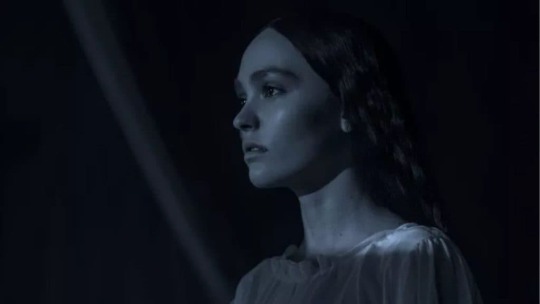
This aspect of Ellen's characterization lies at the core of her behaviour throughout the film. She is an unstable chimera of Brontë's Jane Eyre and Bertha Mason - in the sense that her actions are informed, in great part, by her acute awareness of her own disenfranchisement. She alternates between anguished raving and phlegmatic practicality, used to her pain but unable to entirely ignore it; and, the same way that Jane sees all the rage she feels (but cannot afford to express) manifested in Bertha, Ellen finds her counterpart in Orlok.
This is where the ambiguity begins.
Even though Orlok is most certainly a gothic villain, his relationship with Ellen cannot be interpreted as strictly adversarial. Naturally, it would be easy to ascribe their dynamic to grooming and PTSD; however, as previously mentioned, a gothic narrative is never surface-level - and the film itself never furnishes any information that would definitively limit it to that.
Firstly, to get the primary discourse point out of the way - yes, when Ellen and Orlok first meet within the ether, she is indeed young; and later, she is said to have been a child. However, at the time, the term "teenager"did not yet exist; Ellen's younger self is not portrayed by a child actress; and later, in 1838, she is referred to as a child multiple times - despite being an adult, married woman. Overall, within the film, the term is more often used to describe innocence and inexperience, rather than age; and her initial age is never specified. Granted, a multi-century age gap is not exactly "healthy" anyway - but this is a vampire story. It is per the course; and it complicates their relationship beyond a simple victim vs abuser narrative.
Secondly - and perhaps, most importantly - the overall impact of Orlok's coercion tactics falls flat in comparison to Ellen's human-world alternatives. Yes, he argues and threatens; but her social circumstances have never allowed her agency in the first place. Her father abuses, isolates, and threatens to institutionalize her; Thomas dismisses her concerns as "childish fantasies"; Harding and Sievers tie her down and drug her; Harding again kicks her out of the house. Her marriage, her friendships, are therefore all transactional; they grant her an escape from her father's house, relative financial stability, social support - on the condition that she represses her true self, pretends to be normal, doesn't threaten anyone's masculinity or heterosexuality, and acts like she's happy to be a deferring, obedient, settled wife. Being a daughter of a landed gentleman, she would never have been given a working woman's education, and evidently has no income of her own; and so, she has no options except to upkeep her end of the bargain - which means that her continued survival within mainstream society relies on constant background coercion.
Compared to this mundane, socially acceptable horror of her existence, the vampire actually offers her more autonomy than she is ever otherwise accorded. The terms of his covenant never threaten Ellen's own well-being; so on one hand, she has benevolence - and on the other, the dignity of choice.

This contrast lies at the heart of her dilemma. Ellen is torn between what she believes she should be and what she knows - and Orlok knows - she is.
One is "correct," moral, Good; the other is "wrong," sinful, Evil. However, at the same time, the first is manufactured; it is artificially designed, and must be continuously enforced. The second is primal. Natural. In accordance with gothic tradition, the appeal of Orlok is that he is forbidden, yet instinctive. By design, he is a reflection of everything that Ellen is forced to repress on a daily basis. That includes her rage, her ostracism, her abnormalities; but also, her desperate need to be respected, understood, and desired. He is both grotesque and alluring, both a lord and a beast, both cruel and reverent.
"He is my melancholy!.." cries Ellen.
"I am Heathcliff!" whispers Cathy.
Still, while Cathy and Heathcliff are primarily divided by class and racism, Orlok and Ellen are separated by moral considerations. In the explicit sense, Ellen cannot choose the Evil that Orlok represents. Within the surface narrative, she is obligated by her society, her morals, and the story to choose Good - in this case, by nobly sacrificing her individual expendable life to save her husband and a city full of people. Her primary storyline, like everything else, has already been decided for her.
For the Trekkies among us, this is Ellen's own Kobayashi Maru. A no-win scenario. As such, within the context of character analysis, her destination does not matter as much as the little things she does along the way; and it is no accident that, as the film progresses, the subtler, seemingly insignificant choices she makes within that framework just happen to bring her closer - and closer - to Orlok.

All of them are just innocuous enough to almost pass. She places a lock of perfumed hair in a locket that she gives to Thomas - and upon his arrival to the Carpathians, the same locket is immediately claimed by Orlok, who recognizes the scent of lilacs. Before making her sacrifice, she puts on her wedding dress and finds a bouquet of the same flowers - which is the sort of effort she didn't have to perform, especially given that he cannot resist her blood regardless. When Orlok arrives, she chooses to undress them both, and leads him to the bed, even though her previous sex scene with Thomas was entirely clothed; and in the morning, she pulls him close and holds him through the sunrise - even though he was already dying, and would not be able to escape. There was no need for her to touch his rotting flesh at that point, much less caress it.
There can be a "moral" explanation for all these actions; but the lack of direct obligation involved in them becomes increasingly blatant over the course of the story, and the doubt festers.
This sort of lingering ambiguity is precisely where gothic horror thrives - and intersects, scandalously, with romance. Gothic horror, much like bodice-ripper novels, noir thrillers, or "dark romance," builds much of its romantic intensity on the dichotomy of shame and desire. Imagine it, if you will, as a loom; warp and weft. It may even be described as literary BDSM - a continuous, mutually-agreed-upon act of roleplay between the author and their audience, and sometimes the characters themselves (though that depends). The point is to create an outlet for female, queer, or disabled sexualities, all of which are still heavily medicalized and restricted, derided, or denied entirely; and within these often intersecting genres, the violent or coercive intensity of the dominant lead (be it a vampire, a mafia don, or simply a more experienced lesbian) provides their repressed, seemingly passive counterpart an excuse to act upon their demonized erotic urges.
Between the page and the mind, everything that normally complicates a romantic or sexual encounter in the real world (subliminal hints, aggression, repressed and involuntary responses) becomes set dressing - serving to place a particular scene or dynamic within its fictional universe. The resulting Watsonian uncertainty is, naturally, part of the appeal. It is what allows the viewer/reader/listener a sincere emotional and sensual immersion; and for Ellen and Orlok, it provides an appropriately dramatic pretext for a night of tender vampire sex.
The discourse around their joining is painfully similar to the same that drifts around online every winter - in regards to the classic holiday hit, Baby it's Cold Outside. The song, written during an era in which extramarital sexuality was heavily restricted, follows a couple brainstorming excuses for the lady to stay the night; this intention was explicitly stated by both members of the original duet; but that hasn't stopped thousands of people from interpreting it as a "rape anthem." It is unsurprising, then, that an element of horror (guilt, shame, repression, coercion) muddles the water even further.
It's oddly apt, considering that the film premiered on Christmas Day.
Granted, I am not denying that there is an abusive aspect to Ellen and Orlok's connection, romantic or otherwise. However, to reduce Ellen to merely his "victim" is extremely inaccurate to her actual portrayal - because, within the framework of the film, her interactions with Orlok are the few in which she is actually able to exercise some form of agency. She never defers to him, their wedding-death hinges on her free will, as coerced as it may appear; and, in a fascinating subversion of a popular vampire trope, she is the one who summons him.
In gothic media, "Come to me!.." is invariably spoken by a vampire (or a vampire derivative like Erik, Leroux's titular Phantom of the Opera); their counterpart follows helplessly, without question; and giving these lines to Ellen is a dramatic deviation from tradition that fundamentally alters the underlying context of their power balance. By maintaining this call-and-response dynamic throughout the story, Eggers asserts that Ellen isn't helpless; and neither is she "in over her head." She is intelligent, powerful, and she has a tangible influence over Orlok, who is her only equal - which is why, ultimately, she is the one deciding where that relationship is headed.

That is not to say that any alternative readings of the film are entirely incorrect. As I have stated above, the abusive/toxic narrative is definitely present, and even essential, in gothic media. On the Doylist level, it is the equivalent of a whip, or a solid pair of cuffs - essentially, a divestment of responsibility; though, to continue the metaphor, not everyone shares the same kink - and those who do might not all enjoy it the same way, so there's definitely significant variation. What I am trying to say, however, is that each story does come with a central conflict; and Ellen Hutter's victimization - much like Jane Eyre's, like Thomasin's (The Witch, 2015) - is systemic.
She is ostracized, disrespected - infantilized if her oppressors are feeling benevolent, demonized when they are inconvenienced - and still expected to always prioritize her husband/friends/community by default, regardless of how she is treated by them. Her surrounding society, morality, religion, culture all insist upon the same; and this is why, despite knowing that she has done nothing wrong by following her nature, she carries an enormous amount of guilt in regards to those "unacceptable" aspects of herself. It is also the same reason why Orlok - the sensual, cruel, utterly devoted monster - is the answer to her lonely call; and the reason why everyone around her is so eager to see her as his victim, rather than a victim of anything they may have perpetrated themselves. Ellen's is a rich complexity, fed upon centuries' worth of gothic tradition, and she cannot be forced into a flat, genre-inappropriate simplification.
Like The Witch, like NBC Hannibal, like Interview With the Vampire before it - Nosferatu (2024) is a story of self-indulgence being so unfamiliar that it feels like a sin; or, like dying.

I, for one, would not deny her that.
#nosferatu#nosferatu 2024#nosferatu (2024)#ellen hutter#count orlok#lily rose depp#bill skarsgård#robert eggers#nosferatu movie#robert eggers nosferatu#nosferatu meta#ellenorlok#ellen x orlok#gothic fiction#gothic horror#gothic romance#horror film#horror film analysis#gothic art#wuthering heights#jane eyre#frankenstein#gothic film#vampire#vampires#vampire fiction#vampire movies
221 notes
·
View notes
Text

”—ah. seems like mother goose has been playing around in your egg salad. if you won’t dance to that tune, I got others.”
honestly, the would you kindly scene is whatever to me*, code yellow is the more interesting violation/betrayal of the body because of how beautifully it escalates the Fontaine reveal/betrayal and shows how ugly some of those ‘locks and keys’ that Tenenbaum mentions are. not only have you been a tool in another man’s hand this entire time, it goes deeper. your body is not your own.
*there used to be a meandering thought here about the would you kindly scene, but it was really just talking around the fact that I spent way too many years seeing people discuss it in the most insufferable and reductive ways possible when it’s a combination of three or four other things that make that moment compelling lmao
collage credits: heart one/heart two
⭐ places I’m at! bsky / pixiv / pillowfort /cohost / cara.app / tip jar!
#bioshock#honestly if Fontaine was upfront about wanting Ryan dead I’d have done it after ten minutes of walking around Rapture#I have (squints) somehow two ideas about suchong I want to get out. one more abt atlas and manipulation#there’s a specific kind of family adjacent horror occurring in the text and it’s WILD that suchong is the one we hear Jack refer to#in familial terms while two other men force themselves onto you by appropriating the father role over your body :)#to be clear tho I don’t actually think Fontaine had any familial sentiments towards Jack he’s just occupying Ryan’s space now#WHEEZING can you tell that I think every ‘wow a man chooses/a slave obeys is so deep!’ think piece is stupid as hell#thankfully it’s not as prevalent as it was a decade ago but my god people thought it was the height of philosophy for too long#ANYWAY ALL OF THIS TO SAY. there’s a certain kind of trans anxiety/horror in having your body betray you. or generally body#anxiety. but I read a lot about it in a medieval gender context so it’s trans to me. amongst other things.
526 notes
·
View notes
Text










⭒ ⋆ 🌾 maika monroe in horror films ⋆ฺ࿐🕯️ ࣪⁎˚
#♰ ﹒ ⁺ 𝗀𝗁𝗈𝖮𝘀𝘁’𝗌 𝗉𝗈𝗌𝗍𝗌! ◌ 𖤐 ♩#jay height#it follows#watcher#julia watcher#longlegs#lee harker#maika monroe#maika monroe icons#maika monroe moodboard#it follows 2014#watcher 2022#longlegs 2024#horror movies#horror moodboard#horror icons#horror it girl#horror#horrorwomensource#horroredit#film moodboard#filmedit#movie icons#female icons#icons without psd#dark moodboard#twitter icons#jay height icons#lee harker icons#it follows icons
400 notes
·
View notes
Text
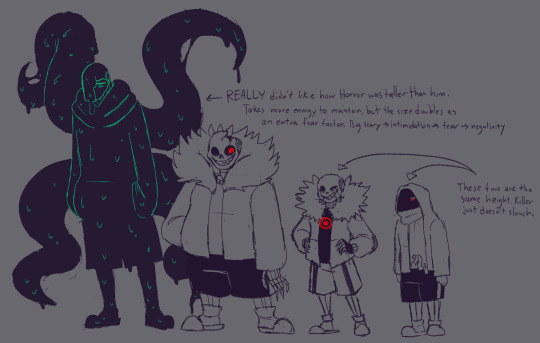
my headcanon heights for the bad sanses :D
#dreamtale#dreamtale nightmare#nightmare!sans#corrupted nightmare sans#horrortale#horror!sans#horror sans#killer!sans#killer sans#dusttale#dust!sans#dust sans#bad sanses#bad sans gang#height difference#reference#i also like to think nightmare sorta mimics a sans body#knowing he's an entirely different person#from far away he looks like a sans#but up close his body is merely mimicry of actual skeleton bones and such#i also imagine as time goes on with his Devious SchemesTM#he looks less like sans and more like a human#a weird uncanny valley
376 notes
·
View notes
Text
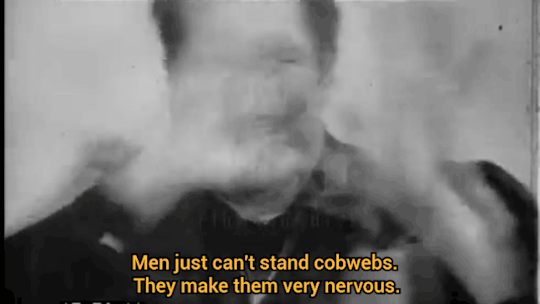
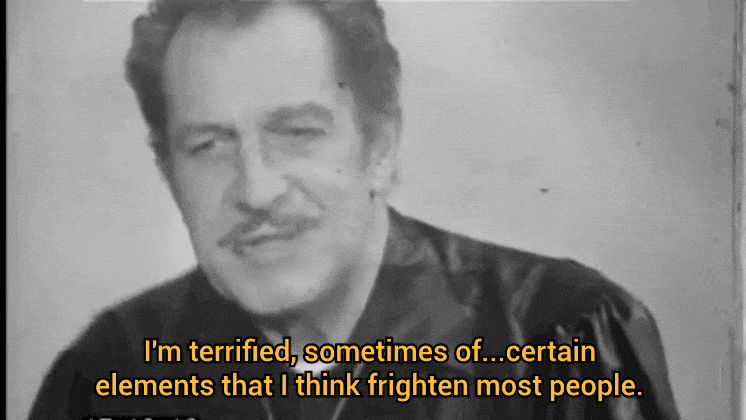
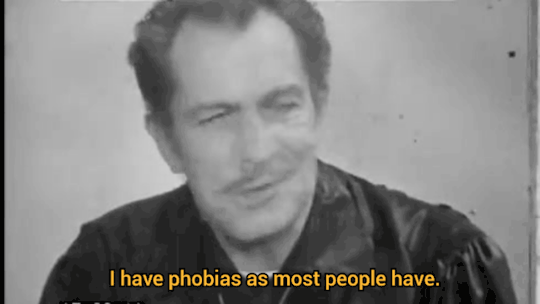


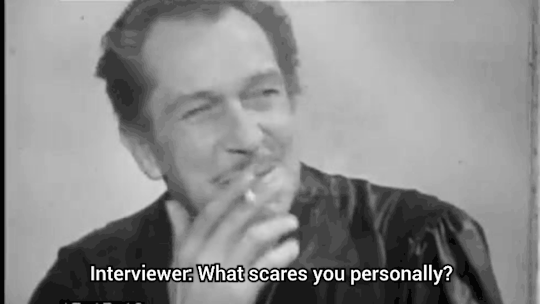

Vincent Price interview on the set of The Masque of the Red Death (1964)
#vincent price#the masque of the red death#masque of the red death#interview#bts#behind the scenes#tw smoking#phobia#phobias#cobwebs#funny#hes so fucking cute#i just love him#he's so sexy#i desire him#heights#bicon#bisexual#god#horror#old horror movies#vintage#movie#actor#handsome#gif#gifs made by me#gif set#gifs
655 notes
·
View notes
Text

group hug ╰(*´ ︶ `*)╯♡
#THEY R ALL SO CUTE RAAUUUHH#heights arnt exact#hornet post and noca are leaning alot#taint is wrapped around everyone at the back :3#ah ah anyways#scotcharts#off game#off oc#chirp (oc)#post (oc)#burner (oc)#hornet (oc)#bonbon (oc)#visionary (oc)#noca (oc)#taint (oc)#ashley (oc)#shortcake (oc)#mantis (oc)#elsen oc#batter oc#do i tag body horror?#no the body horror parts are covered mostly#fav#favfavfav#extra fav#i just think its cute
144 notes
·
View notes
Text
trading bootlegs!!
third time's the charm so. is anyone interested in trading bootlegs? i have almost 600 musicals (and some plays too). if you want to trade dm me and i'll send my list
i am also selling my entire collection btw (individual shows too!!)
#musical bootlegs#slime tutorial#musical theatre#the outsiders#the great gatsby#beetlejuice#the book of mormon#cabaret#operation mincemeat#illinoise#suffs#sweeney todd#hadestown#newsies#merrily we roll along#water for elephants#into the woods#how to dance in ohio#in the heights#&juliet#wicked#lempicka#little shop of horrors#moulin rouge#next to normal#oklahoma musical#aaron tveit#jeremy jordan#the notebook#bonnie & clyde
179 notes
·
View notes
Text


More stuff on In Rot and Infection! Now presenting a basic idea of what happens in earlier loops of Siffrin being able to fight for clarity, along with the full extent of Rotfrin’s height (or how tall they truly are when they’re not hunched over, of course).
#zeisty’s in betweens#in rot and infection#in rot and infection au#irai au#in stars and time au#isat au#in stars and time#isat#in stars and time siffrin#isat siffrin#tw body horror#tw mild gore#tw veins#tw eye contact#just in case tag#for my peeps who need that tagged#listen the body horror isn’t the end result — it’s that it even happened to begin with. at least that’s how i see it#and needless to say no one ever truly sees the full extent of rotfrin’s height. on account of how extreme the changes to their body are
123 notes
·
View notes
Text

WIP on a Prototype design from Poppy Playtime.. used my playersona self insert as a size reference.
#fantasy#digital art#anthro#krita#art#poppy playtime#poppy playtime prototype#poppy playtime fanart#poppy playtime design#mob entertainment#monster design#catnap#mommy long legs#prototype#prototype design#ppt 4#ppt fanart#ppt player#ppt prototype#fanart#horror game#horror#size difference#height difference
54 notes
·
View notes
Text










I love these works so much !
#dracula bram stoker#dracula 1992#nosferatu#nosferatu (2024)#nosferatu 2024#the phantom of the opera#phantom of the opera#interview with the vampire#sleepy hollow#crimson peak#the crow#jane eyre#wuthering heights#la belle et la bête#gothic romance#gothic horror
135 notes
·
View notes
Text

My dream role is Davey Jacobs! (Edit: Now its Paul Matthews tgwldm)
(Tell me yours in notes/tags)
#theater kid#theater kids#musical theatre#hamilton#newsies#into the woods#broadway#musical#broadway musicals#west end#in the heights#something rotten#the guy who didn't like musicals#falsettos#the trail to oregon#newsies musical#newsies broadway#starkid npmd#starkid productions#starkid#beetlejuice#heathers#sound of music#twisted#wonderland musical#dear even hanson#avenue q#little shop of horrors#beetlejuice musical#beetlejuice lydia
429 notes
·
View notes
Text

While Phee is a deeply kind person, good luck to anyone who dares to threaten her family.
#lo rambles#listen#whoever frightens her daughters?? her bebes??? WILL get eaten#a good 10cm of her height are simply a lie but she'll still make a grown man twice her size cry n beg for his life#Tech might not have much fight left in him considering the horrors and 10+ years of semi-domestic girldad life but Phee sure still has lol#watch out with the dad#GOOD LUCK WITH THE MUM#anyway#star wars#the bad batch#fanart#phee genoa#tech bad batch#techphee#tech x phee#oc#genoa sisters#oc helena genoa#oc djoura genoa
216 notes
·
View notes